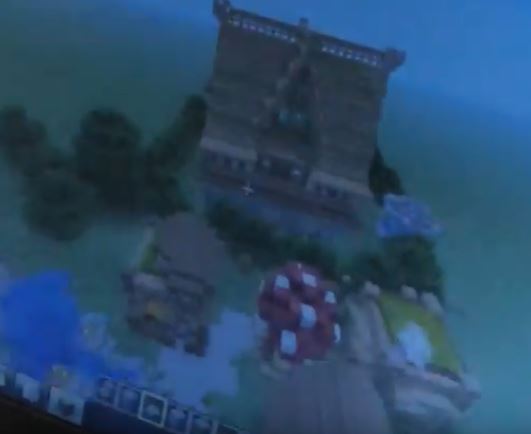Submitted by: Laurie Hoen
School: Mills E. Godwin High School
Summary
In this four part lesson, students will research an artist that interests them, first writing a two page paper exploring what influenced the development of the artist’s work. These influences might include world events, personal life experiences, places where the artist lived or studied, subjects or conceptual approaches they were interested in, associations with other artists, availability of art supplies—anything that informed the aesthetic of the artist’s mature work. Students will collect images of the artist’s work and at least one realistic portrait or photograph of that artist. In step two, students use Photoshop Elements to create a multi-layered design that combines an interpretative portrait of their artist with images that represent that artist’s work and what the student thinks is going on in the artist’s mind and imagination as they create their work. In the third step, students use their digital design as a guide to produce a complex work on paper, panel or canvas that pays homage to their selected artist. In the last step, finished works will be presented in class in the context of a group critique where students discuss the possible influences on chosen artists and how this was represented visually in the work of art.
TIPC Ratings
This lesson is an example of the Target level for Research and Information Fluency.
Students work individually and in table groups to identify and select appropriate digital tools and other resources that will provide them with a diverse set of information and images from many different context such as:
- Biographical information about their selected artists
- Reviews or analysis of their artist’s work written by art critics and scholars
- Image galleries that contain artwork made by their artist
- Museum art history time lines that place their artist on a continuum of art movements and world events
- Students apply varied research skills to evaluate relevancy of information to the specific objectives of this research assignment and build a selective file of information and images to be used in the project—projecting ways that these ideas and images can be combined effectively in later stages of the project
- Students write with clarity using expanded arts vocabulary
- Students combine visual information thematically to form new meaning in an effective visual composition
This lesson is an example of the Target level for Communication and Collaboration.
- Students work in table groups to identify valid and useful resources during the research stage of the project
- Students are encouraged to communicate one-on-one with artists or arts institutions outside of the classroom using appropriate on-line communication tools during their research
- Students share their knowledge of Photoshop techniques and engage in peer-to-peer coaching to maximize the effective use of software during the design stage of the project
- Students participate in a collaborative evaluation of the project and resulting artworks in a discussion-based class critique
- Final art works are shared globally through a digital gallery
This lesson is an example of the Target level for Critical Thinking and Problem Solving.
- Students analyze factual information, assess the opinions of art critics and historians, make personal judgments concerning an artist’s style or subject matter, and tap new or prior knowledge of history, culture, and socio-economic influences to draw conclusions about what influenced the aesthetic development and style of their artist
- Students must recognize and/or project plausible cause and effect relationships based on information they have discovered and evaluate whether they can support these ideas using visual evidence found in the artist’s body of work
- Students must envision ways to translate their research first into a digital design and then into a physical work of art that combines a variety of art media in a multi-layered presentation of both information and visual expression
- Students analyze the attributes of their work and that of other students in terms of its ability to evoke a viewer response and command sustained attention
This lesson is an example of the Target level for Creativity and Innovation.
- Students synthesize the conceptual ideas generated by their research into a visual expression, utilizing strong aesthetics of design and communication to produce an original work of art
Download Files
What Were They Thinking
Contents:
- What Were They Thinking Lesson Plan
- Links to Student Examples





